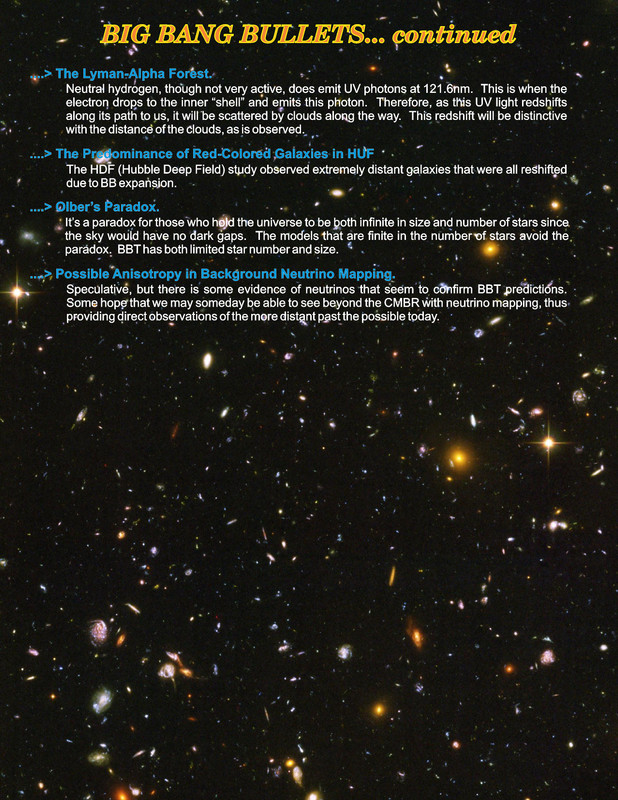Speaking of the physics of the Big Bang model, I read an interesting report in the May issue of Sky & Telescope.
The Lithium Problem, Croswell, K., Sky & Telescope 143(5

20-25, 2022, May issue. Here are some notes I compiled for my home database after reading this interesting report.
My note, 1. Halo stars contain about 1/3 lithium abundance as Big Bang model predicts. This is a problem.
My note, 2. Initially during BBN, beryllium-7 created and no electrons. About 800 years after BBN, the temperature of the universe falls to 80,000 kelvins. “Beryllium-7 could then acquire electrons, some of which soon fell into the nuclei and turned all of the beryllium into lithium. This lithium survived…This is how about 95% of primordial lithium was minted…”
My note, 3. “The problem: These nuclear reactions created three times more lithium than exists in halo stars.” My observation. Solutions are presented to the lithium problem.
My note, 4. “New Physics” is discussed (p. 24). Here are some new physics ideas presented. “Particle X” arose soon after the Big Bang. Particle X lived just a short-time, so it broke up, emitting neutrons that obliterated two-thirds of the beryllium-7 but managed to leave the deuterium and helium alone.” “Even wilder ideas exist. Perhaps some of the fundamental constants of nature, such as the speed of light or the charge of an electron, differed during the universe’s earliest moments. Or – most extreme of all – perhaps the disagreement between theory and observation means the whole theory is wrong: The Big Bang never happened.”
My note, 5. Another solution is the fault is in the stars. “Stars usually destroy the lithium, because the element is fragile. Protons split it apart once the temperature exceeds 2.5 million K. The Sun has annihilated nearly all of its lithium. Although the solar surface is too cool to harm the element, the outer parts of the Sun are convective. That means they bubble and boil, dragging surface material down into the hot interior, where protons destroy the lithium.” My note. This process described for lithium destroyed in the Sun is applied to old, halo stars that show lithium problem. Astronomers are searching to show that halo stars did erase their primordial lithium inherited from BBN and the postulated Big Bang pristine gas clouds that no one has seen in nature.
My note, 6. (p. 25), “To gauge opinions about those developments, scientists at a 2019 conference in Italy voted on their preferred answer to the lithium problem. The winning solution? The Big Bang nucleosynthesis calculations are fine; halo stars have destroyed two-thirds of their lithium. If so, then we currently have no direct measurement of how much lithium the primordial universe produced. Someday decades hence, with advanced telescopes, astronomers may discern this crucial number.”
My note, 7. (p. 25), “If such measurements someday succeed and show a high primordial lithium level that agrees with Big Bang theory, the result will affirm the standard cosmology. On the other hand, if the two numbers still disagree, astronomers will need to seek another solution to the lithium problem. And who knows: There’s even an outside chance that Big Bang skeptics such as the late Fred Hoyle – who coined “Big Bang” without believing in it – will have the last laugh.”
My observation. The lithium problem in Big Bang model and old halo stars seems to remain in this report. A question. 800 years after the Big Bang, the universe is expanding and cools to 80,000 K. Just how fast was space expanding? If you use the cosmology calculators and z=1100 for the CMBR, the size of the universe is about 80 million light years across when the CMBR forms or close to 41 million light years radius as if measured from Earth at the center. This expansion took place in 380,000 years so space is expanding much faster than c velocity for the Big Bang calculations to explain the origin of the CMBR it seems.




 [/url
[/url
